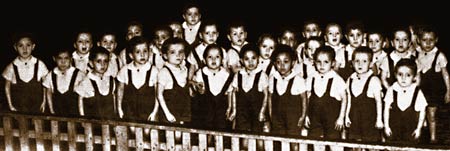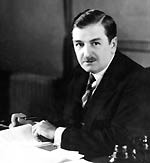The Dark Mystery of the Duplessis Orphans
 |
![]() In
the mid-20th century, under the regime of Quebec Premier Maurice Duplessis, tens
of thousands of disadvantaged children were transferred from orphanages into
asylums in a corrupt ploy to divert funding into psychiatric coffers. Many simply
vanished. Today, a small band of survivors and their families seek answers — and
justice.
In
the mid-20th century, under the regime of Quebec Premier Maurice Duplessis, tens
of thousands of disadvantaged children were transferred from orphanages into
asylums in a corrupt ploy to divert funding into psychiatric coffers. Many simply
vanished. Today, a small band of survivors and their families seek answers — and
justice.
|
|
Clarina Duguay remembers what life was like before her mother, Clara, moved away. The eldest daughter among five children, she recalls the happy life of a family, cash-poor but rich in love, in Cap d'Espoir, a fishing village on Canada's Gaspé peninsula.
Every morning, with her dog, Coffee, she helped her mother gather up the eight or nine cows the family owned so they could be milked. From her mother, she learned many things, including how to bake delicious bread — a skill that today, more than 60 years later, she still enjoys.
In a rural community where horses were the primary means of transportation, Clara encouraged Clarina's dream of one day becoming an airline stewardess. It was a close-knit family, one where each member supported the others.
The idyllic life ended in 1945, when Clara, stricken by tuberculosis, moved to a sanatorium.
Clarina's father, Joseph Duguay, a lumberjack frequently away from home, was persuaded by the family doctor and the parish priest to send Clarina and her younger sister, Simonne, to an orphanage in Rimouski, on the St. Lawrence River. He was told they would be well educated.
But in 1946, shortly after Clarina turned 11, she and perhaps 10 other children from the facility were loaded onto a bus. Told they were being taken on a tour of Rimouski, they were instead driven to the town of St. Ferdinand, hundreds of miles away, and through the gates of the St. Julien psychiatric institution. There, Clarina's horror story began.
Fraudulent Psychiatric Labels
Many years later, Clarina would learn of the false psychiatric label — "mentally retarded" — that condemned her to St. Julien.
But at the time, she inexplicably entered a hell where she scrubbed floors endlessly on orders from the institution's staff.
"They would plunge our heads into ice-cold water if we did something wrong," Clarina said, adding that they would be kept immersed almost to the point of drowning. To this day, she dreads water and fears she will drown.
For the tiniest infraction, she could be forced to kneel in an excruciating position for hours, or put in a straitjacket, or locked to a bed with no mattress — her feet tied to the cold steel frame and her head pinned down by a dog collar around her neck. She reported being sexually assaulted.
Simonne later joined her at St. Julien, also unknowingly labeled retarded. With both girls, their father was not informed of their fate. Letter-writing was forbidden at Rimouski and St. Julien; compounding that barrier, the girls' father could neither read nor write. Presuming no news was good news, he trusted his daughters were being properly cared for.
And when Clarina cried for her mother, a staff member told her that Clara had died of syphilis in another psychiatric institution. In truth, she succumbed to tuberculosis at the sanatorium, unaware of her daughters' plight.
But then it got worse. Clarina remembers the chlorpromazine she and others at St. Julien were forced to take, an experimental drug at the time*, but one so powerful its principal pioneer and promoter, German-born psychiatrist Heinz Lehmann, would later dub it a "pharmacological substitute for lobotomy."1
"It made me into a zombie," Clarina said. The drug, known as Largactil in Canada and Thorazine in the United States, was administered by injection and by pills, virtually every day. She was told it was "cold medicine."
By Christine Hahn and Thomas G. Whittle

